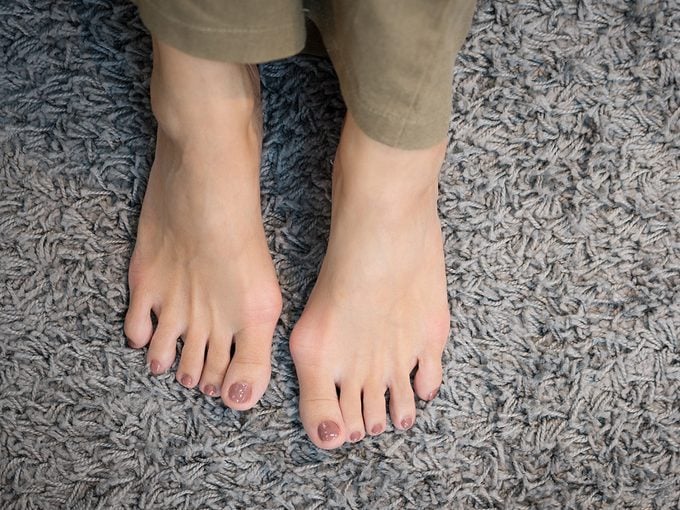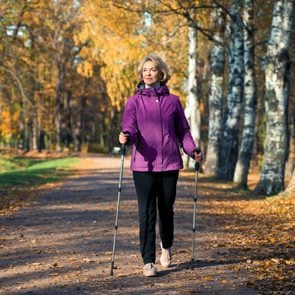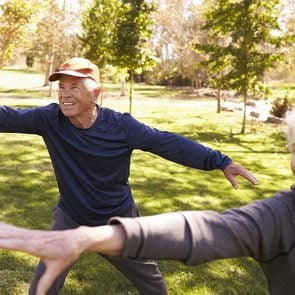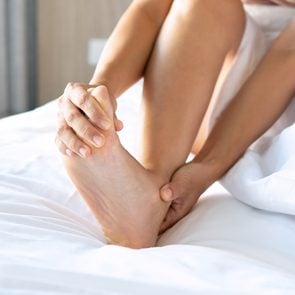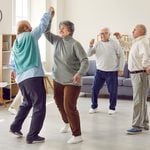We’re Hard on Our Feet—Here’s How to Show Them Some Love
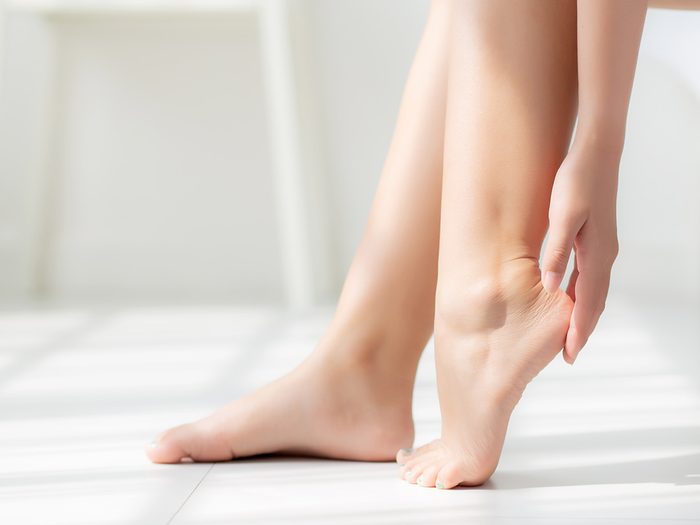
Foot care tends to be an afterthought, but the condition of your your feet can drastically affect your quality of life.
Walking. Hiking. Jogging. Biking.
Unaided, we can’t do any of these things without our feet. So why, when our quality of life is directly related to being active, do many of us ignore foot care?
Spanish scientists expressed concern over a rise in foot issues in their 2021 study of how poor foot health affects everything from physical activity to the overall health of able-bodied people (participants ranged from age 15 to 69).
“Foot problems can reduce quality of life, lead to loss of balance, make it difficult to put on shoes and increase the risk of falling,” the authors wrote in the journal Scientific Reports. “All of this can affect activities of daily living, including the desire to go outside.”
Meanwhile, a 2017 study, also in Spain, of able-bodied university students found that poor foot health not only prevented them from being physically active but also increased their risk of becoming socially isolated as a result.
Read on to discover how to practice good foot care.
Beat the bunion blues
If foot pain limits your activity and lasts more than a week, says Paul Langer, a Minnesota-based sports-medicine podiatrist, it’s time to see a podiatrist or an orthopaedist. Adds Hartley Miltchin, a Toronto podiatrist who has dubbed himself “the Bunion King,” if feet—the body’s foundation—aren’t performing properly, they throw everything else off. “They’re like the base of the Tower of Pisa. When they’re off, the tower leans.”
Bunions are one of the most common foot problems preventing people from being active. Almost a third of us have one. It’s the bony bump that can form when the big toe becomes misaligned; that causes the tip of the toe to move inward and the joint at the base to stick out sideways. Bunions don’t go away on their own.
Troy Gubb had always been active, but about a decade ago, in his early 40s, he developed a bunion on his left foot. When the Toronto-based manager for a communications and media company removed his skates after playing hockey, his foot was red and inflamed. After a round of golf, it throbbed. Eventually, he had to give up hockey, then golf, then running. He couldn’t even take Carl, the family bulldog, for a walk.
“The end of the line was last fall,” he says. “I was limping around with a cane and I couldn’t put pressure on my foot.” He began looking into how to deal with bunions.
The condition is generally caused by a combination of genetic predisposition and footwear, says Dr. Kathleen Gartke, senior medical officer at the Ottawa Hospital and an orthopaedic surgeon who has performed many bunion-removal procedures. “Fashion is not kind to feet,” she says, adding that wearing tight or narrow-toed shoes, high heels or shoes with no support is okay now and again, but “not all day, every day.”
If you notice a bony bump forming at the base of your big toe, try spending more time in shoes that don’t crowd your toes. Gartke also recommends wearing a toe spacer (available at most pharmacies) between your first and second toe to help keep them straight. It can also help you identify shoes that you shouldn’t wear—any that feel tight when you are wearing the toe spacer.
Bunions tend to worsen over time. If they become so painful that they interfere with your daily life, consider having them surgically removed. “All bunions are not created equal and so there are dozens of different procedures available,” Gartke says. “An X-ray will help your doctor decide on the one that best addresses your problem.”
The most common are exostectomy (or bunionectomy) and osteotomy, and they’re usually done in tandem. The surgery takes from 45 minutes to an hour. Exostectomy involves shaving off the bump of the toe joint. Then an osteotomy is done to solve the underlying issue. A surgeon makes cuts along the bone to realign the joint and inserts pins or screws to hold the bone in place. Sometimes a small piece of the big toe’s bone might need to be removed to help straighten the toe.
The good news is that the procedures often require only a local anaesthetic. And what was once a painful recovery can be better managed with a continuous nerve block. That’s when an anaesthetist puts a small tube into the back of the knee that delivers freezing into the nerve that connects to the foot in the bunion area.
“The tube can remain in place for a few days and provides excellent pain control,” says Gartke. Full recovery—when there is no more swelling or tenderness—takes from four to six months, depending on the procedure and the severity of the bunion.
Gubb had Miltchin remove his with a surgery the podiatrist developed that is quicker, less invasive and has a faster recovery time. He trains other podiatrists, as well as orthopaedic surgeons, in the procedure, during which he uses precision instruments to make small cuts in the bones to bring the big toe back into alignment.
Six weeks after his surgery in April 2022, Gubb was golfing again. By summer, he was running (and winning) races, and he returned to playing hockey and skating with his daughters a few months later. He only wishes he’d addressed his foot pain 10 years earlier.
Address other sources of foot pain
Apart from bunions, Langer says, the other common causes of foot pain that drive people to his clinic include plantar fasciitis, Achilles tendinitis and osteoarthritis.
Plantar fasciitis is a stabbing heel pain common in runners and dancers. It is caused by inflammation of a band of tissue—the plantar fascia—that runs along the bottom of your foot, connecting your heel to your toes. It’s not a muscle, tendon or ligament, so it’s rigid and can’t stretch.
Over time, microtears develop on the tissue, causing pain. In people who overpronate (roll their heel inward when they walk), it’s worse because that creates even more tugging. Langer says that an off-the-shelf insole may help to relieve strain on the plantar fascia. If that fails, orthotics may be considered. Stretching, physiotherapy and icing the area can also help relieve symptoms.
Achilles tendinitis is an overuse injury that causes pain in the Achilles tendon, which connects your calf muscles to your heel bone. Resting and over-the-counter pain medications help, as do physio stretching and strengthening exercises. Orthotics that elevate the heel can also relieve strain on the tendon.
Another common culprit for foot pain is osteoarthritis, which is typically attributed to wear and tear. “One in six people over the age of 50 have arthritis in their feet, and, with 33 joints in each foot, that can be an issue that limits activity,” Langer says. Treatment includes medications (such as acetaminophen and nonsteroidal anti-inflammatory drugs like Advil and Aleve), physical therapy, cortisone injections or even joint replacement.
Check out more options to find relief from arthritis pain.
Keep your feet happy with foot care
Sometimes, foot care and the prevention of foot problems begins elsewhere in your body. Dahlia Fahmy, a physiotherapist and owner of Sports and Ortho Physical Therapy in Chicago, describes the body as “a kinetic chain.” Every move we make creates a chain reaction in our muscles, tendons, ligaments and joints.
“The foot is the driver of all movement,” Fahmy says. “When the foot hits the ground, everything else in the body changes, and if a foot is dysfunctional, it can drive everything up the chain to be dysfunctional, too.” The key to a healthy, stable foot, says Fahmy, is strength in the glutes and mobility through the hips and calves. “Our feet need help from their friends above to keep them working properly.”
Langer agrees, and frequently sends his podiatry patients exercise information and referrals to a physiotherapist to work on strength-training calf muscles, quads, hamstrings and glutes, as well as the upper body. He points out how important it is to strengthen the muscles of the foot and ankle. “Numerous studies show that having strong feet reduces our risk of falling and helps offset the natural deterioration of muscle that starts around age 50.”
Scientists at the University of São Paulo in Brazil concluded that strong feet can reduce your risk of running-related injuries by more than 50 percent.
To practice foot care and keep his own feet fit, Langer trains the large muscles in his legs and the small muscles in his feet with hill running and something called toe yoga. “The idea is to first activate the muscles of the foot, then progressively integrate the muscle activation into more challenging movements, like going from sitting to standing, then standing on one foot, then hopping, then running.”
A good pose to start with: Stand so your weight is evenly distributed between your big toe, pinky and heel. Then lift all five toes off the floor, spread them as far apart as you can, and then lay them back down, one toe at a time.
Langer, who has run more than 25 marathons, has long been fascinated by how our feet carry us through the world. “We don’t often think of our feet as sensory organs, but they send a tremendous amount of information to our brains to help us maintain balance, adapt to different surfaces and move efficiently.”
He compares what happens when we walk on a soft, sandy beach versus a concrete sidewalk: Sand is unstable and requires much more energy to move over than a firm, flat surface, such as concrete, he says, so “Our feet provide the sensory input that allows our brains to change the limb stiffness of our legs, helping us optimize our movement patterns for various surfaces.”
Walking outdoors has several health benefits for our feet, one of the most important of which, says Langer, is the variety of terrain. “Uneven terrain forces our joints to bend and flex to adapt, and it requires our muscles and neurologic system to work harder to provide power and balance.” All of this helps us maintain our range of motion, strength and balance—all part of practicing foot care.
So it was welcome news last year that Parks Canada joined PaRx, the country’s first national nature-prescription program: doctors can now prescribe time in national parks and conservation areas.
Regardless of the surface you do it on, walking offers myriad health benefits. Canadian researchers found it’s one of the best—and most preferred—forms of exercise for people with osteoporosis. Plus, a study published in September 2022 in the Journal of the American Medical Association Internal Medicine analyzed activity-tracker data from 78,500 people and found that brisk walking for 30 minutes a day led to a reduced risk of heart disease and cancer.
Brush up on the proven benefits of walking.
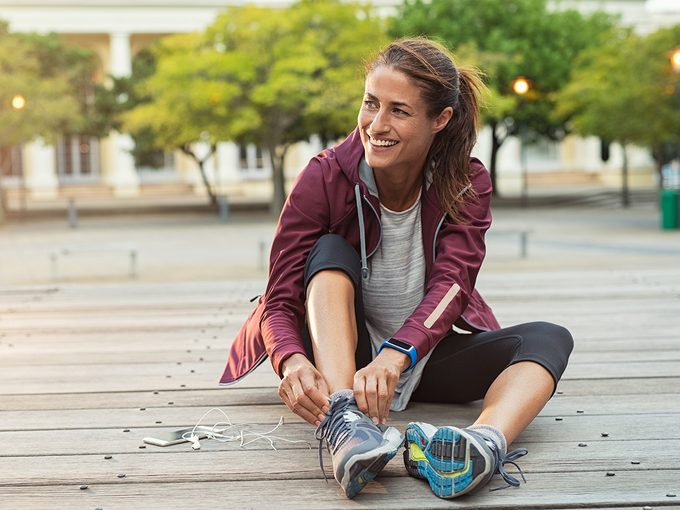
Foot care includes choosing the right shoes
Despite research touting the benefits of extra cushioning, Langer says there is no magic shoe that is ideal for most people. One of the biggest mistakes people make, he says, is relying on reviews or salespeople for recommendations on the “best” shoes.
“Comfort is extremely important, but comfort is complex and can’t be quantified,” he says. “For example, I like a cushy—but not too cushy—forefoot and a wide, round toe box.” Trial and error, and gut instinct, are his secrets to successful shoe shopping.
Helen Branthwaite of the Royal College of Podiatry is a senior lecturer in clinical biomechanics at Staffordshire University in the U.K. She has based much of her research on her own passion for shoes and her interest in the impact they have on foot mechanics (sneakers are her favourite, though she does own a pair of heels or two).
“Research shows that shoes affect how we function,” Branthwaite says, “and influence our movement and how much pressure we put on our feet.” If shoes aren’t comfortable the moment you put them on, they’re best left on the shelf. “The concept that you can wear a shoe in, or that it will stretch, is nonsense,” she adds.
Branthwaite, who has a podiatry practice in Macclesfield, England, recommends that shoes match the shape of your foot. So if you have a square-ish foot, for example, look for similar-shaped shoes. And arch support is key. Some brands are developing styles to accommodate common foot issues, such as bunions.
Branthwaite also advises patients on what to wear to solve foot problems, whether it’s more cushioning for heel pain or smooth inside seams for bunion sufferers. “Sometimes the shoe becomes the treatment,” she says.
One of Branthwaite’s patients was suffering from such severe arch pain that she could no longer walk her dog, so Branthwaite had her replace her flimsy ballet flats with sturdy, supportive boots.
In 2021, French researchers studied the use of shoes specifically designed to improve balance and stability in everyone from athletes in training to people over 65. They noted that more than 30 percent of people older than 65 fall each year, and falls account for 90 percent of hip fractures. The researchers concluded that the shoes not only improved balance but made people feel safer and more stable when walking.
Gillian Parkinson, a retired speech and language pathologist in Wilmslow, England, can attest to the difference a change in footwear can make. Parkinson recently turned 70 and was finding walking increasingly difficult. She had developed Achilles tendinitis and was also rolling over on her ankles.
After a few unnerving falls, she went to Branthwaite for help. The first thing the podiatrist did was have Parkinson switch up her shoes (replacing slip-on loafers with shoes that had a Velcro fastening and a sole with more contact area to help with stability). Then she added a heel-raising insert so Parkinson would be better balanced.
Not only did her Achilles tendinitis disappear, but Parkinson began walking outside again, even tackling the occasional hill. “Within about 50 metres of our home, my husband and I can access a country lane. Or we drive to a historic site where we can walk for a couple of miles and reward ourselves at a little café at the end,” she says. “Therapeutically and psychologically, walking does me good.”
Now that you’re familiar with these foot care essentials, find out what happens when you start walking 10,000 steps a day.
